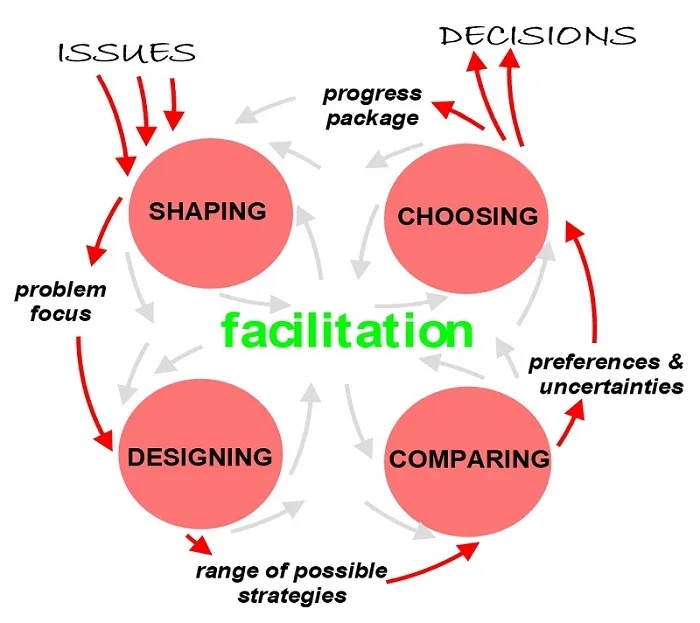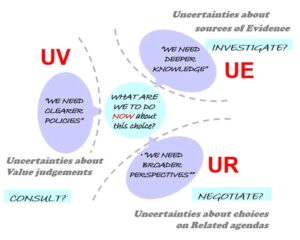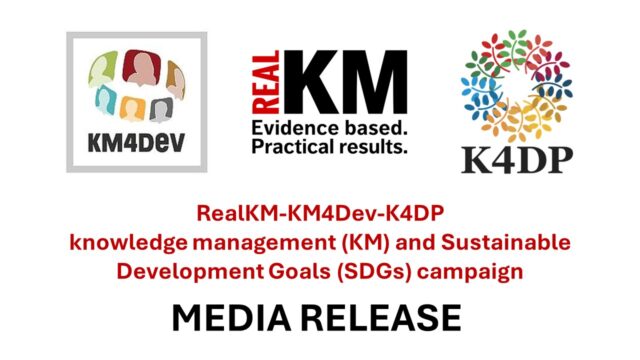
The Strategic Choice Approach in shaping public policies
By Catherine Hobbs. Originally published on the Integration and Implementation Insights blog.
How can we be inspired, rather than overwhelmed, by differing perspectives in the inter-organisational planning required to more effectively address cross-cutting issues, or interacting areas of policy? How can we learn from the achievements of public policy action research, in the light of the local and global uncertainties of the 2020s?
Strategic Choice Approach was developed by John Friend with Allen Hickling, originating during the 1960s and 1970s. It emerged through a series of collaborative action research projects applied to public policy challenges in a number of countries, so that its origins are empirical rather than theoretical.
Friend described Strategic Choice Approach as being helpful as a practical approach to planning under pressure where “people of different outlooks and allegiances are working together with a shared concern to move rapidly towards commitments to action or to changes of policy on difficult issues of shared concern” (Friend, no date).
Strategic Choice Approach as four modes of Strategic Process Planning
The Strategic Choice Approach consists broadly of four inter-linked modes (shown in the first figure below) – shaping, designing, comparing, and choosing. These should not be seen as sequential steps, but rather as co-existing continuously through time. The approach involves a facilitated process, where issues are shaped into a problem focus, which is used to design a range of possible strategies, which are then compared according to participant preferences and uncertainties, leading to a choice based upon what can be done about key uncertainties, whether decisions can be made now, and the creation of a progress package.
A characteristic of Strategic Choice Approach is that it thus attends to tracking the assumptions and uncertainties that invariably underlie public policy planning, using this analysis to create a “progress package” of operational support. As the first figure shows, there are multiple interactions in what is usually an iterative process.
The Strategic Choice Approach addresses the following challenges:
- SHAPING problems can present challenges where people view the choices ahead from different perspectives, and find it hard to agree on a shared focus.
- DESIGNING strategies can present challenges where people may find it hard not only to agree on options, but also to explore ways of combining them in broader schemes.
- COMPARING alternatives can present challenges where people may be uncertain about their impacts, and may differ over their relative importance.
- CHOOSING a course of action can present challenges where people must grapple with diverse sources of uncertainty, balancing pressures for early commitment against concerns to retain flexibility of future choice.

This dynamic process of choosing strategically through time is underpinned by a set of questions:
SHAPING:
- What areas of choice do we currently face?
- Where should we focus our attention?
DESIGNING:
- What options are available to us?
- In what ways can these options be combined?
COMPARING:
- What can we say about our preferences?
- What can we say about the impact of our choices?
CHOOSING:
- What should we do about our key uncertainties?
- In what way should we now move forward? (Friend and Hickling, 2005).
The value of Strategic Choice Approach lies in the way in which it focuses attention on:
- the important and urgent decisions to be made in real time;
- the significant sources of uncertainty that can make it hard for people to agree how to move forward;
- the choice of a strategy for progress at the current stage of a dynamic planning process.
The five key emphases of Strategic Choice Approach are that they put more emphasis on:
- facilitating decisions than on investigating systems (agenda focus)
- managing uncertainty than on acquiring information (knowledge focus)
- sustaining progress than on projecting futures (time focus)
- structuring communication than on reinforcing ‘backroom’ expertise (skill focus)
- supporting forming connections and negotiation than on exercising control (influence focus).
Three kinds of uncertainty in decision-making
Strategic Choice Approach attends to three kinds of uncertainty as shown in the figure below:
- If there are uncertainties about guiding values (UV), clearer objectives or policies are needed. This kind of uncertainty requires a political response.
- If there are uncertainties about sources of evidence (UE), deeper investigation is needed. This kind of uncertainty requires a response of a relatively technical nature. (Earlier variations of the diagram described UE as Uncertainties about our working Environment or Uncertainties about Environmental factors).
- If there are uncertainties about choices on related agendas (UR), wider collaboration is needed. This kind of uncertainty requires a further exploration of structural links between decision areas, a broader planning perspective, negotiation or collaboration.

Conclusion
As a developmental decision-centred approach to planning (Friend, 1997), Friend envisaged Strategic Choice Approach as providing operational support for management tasks in situations of complexity, fitting somewhere between a broader viewpoint of systems science, and a narrower viewpoint of classical decision science.
Through the experience of empirical projects, Strategic Choice Approach incorporates a range of participatory planning tools for negotiating the strategic process, for exploring sources of uncertainty, for mapping public policy landscapes and frameworks for inclusion.
Does any aspect of Strategic Choice Approach described here resonate with you? Could Strategic Choice Approach be part of a set of creatively combined complementary approaches to refresh an engagement with assumptions, uncertainties and inclusion in public policy planning? Is there room for an investigative research agenda centred around Strategic Choice Approach as a dynamic, socio-technical approach to public policy planning?
References and more information:
Friend, J. K. (no date). Introducing the Strategic Choice Approach. Powerpoint presentation, Operational Research Society document repository. (Online): https://www.theorsociety.com/resource-centre/document-repository/document/b1537e84-c119-4c62-8570-f664f431ef4d/.
Friend, J. K. (1997). Connective Planning: From Practice to Theory and Back. In: E. Trist, F. Emery and H. Murray (Eds.), The Social Engagement of Social Science, Volume III: The Socio-Ecological Perspective. Philadelphia, University of Pennsylvania Press, United States of America.
Friend, J. K. (2001). The Strategic Choice Approach. In: J. Rosenhead, and J. Mingers. (Eds.), Rational Analysis for a Problematic World Revisited: Problem Structuring Methods for Complexity, Uncertainty and Conflict. Wiley: Chichester, United Kingdom.
Friend, J. K. (2004). Perspectives of Engagement in Community Operational Research. In: G. Midgley and A. E. Ochoa-Arias (Eds.), Community Operational Research: OR and Systems Thinking for Community Development. Kluwer Academic/Plenum Publishers: New York, United States of America.
Friend, J. K. (2019). Six Important Directions for Research in Public Policy Choice. Document, Unpublished, Operational Research Society Document Repository. (Online): https://www.theorsociety.com/resource-centre/document-repository/document/ece0e7a4-0231-4148-b991-0f0674061e26/
Friend, J. K. and Hickling, A. (2005). Planning Under Pressure, 3rd edition. Elsevier/Butterworth Heinemann: Oxford, United Kingdom.
Lami, I. M. and Todella, E. (2023). A Multi-methodological Combination of the Strategic Choice Approach and the Analytic Network Process: From Facts to Values and Vice Versa. European Journal of Operational Research, 307, 2: 802-812.
The Operational Research Society’s document repository has a comprehensive archive of Friend’s documents: https://www.theorsociety.com/resource-centre/document-repository/
The Operational Research Society Public Policy Design Special Interest Group provides a full recording of the kickstarting of an outreach programme and the celebration of Friend’s 90th birthday (December, 2020): https://www.theorsociety.com/get-involved/society-groups/special-interest-groups-and-networks/public-policy-design/
Tribute:
This i2Insights contribution has been created as a humble tribute to the lifelong achievements of John K Friend (1930 – 2022), and his quiet yet determined aspirations to ensure that the knowledge and experience gained by Strategic Choice Approach is recorded and disseminated, so that it may continue into the future. The author had the privilege of working with John from 2012 during the Operational Research (OR) Society’s Future Influence of OR in Public Policy initiative, in establishing the OR Society’s Special Interest Group in Public Policy Design, and helping to arrange the associated event at the Royal Society (2014), remaining in touch over the years that followed. There is much to learn from Friend’s quiet modesty and thoughtfulness, depth and breadth of knowledge and experience, ability to listen and adapt, and to forge his own clear brand of (at the time) radical thinking in his innate desire to make the world a better place: the spirit of an approach which, moving in to its seventh decade, has stood the test of time.
Friend was awarded the OR Society’s Beale Medal in 2015 for his invention, development, elaboration, practice and promotion of the Strategic Choice Approach. He was a Visiting Professor at the Universities of Bradford, Hull, Lincoln and Sheffield.
Biography:
 |
Catherine Hobbs PhD is an independent researcher located in Cumberland, UK. She is a social scientist with experience of working in academia and local government, with a focus on developing multi-agency strategies in transport and health. She is interested in developing better links between the practice of local governance and scholarly expertise in order to increase capacity to address issues of complexity through knowledge synthesis. She is also interested in the potential of applying and developing a variety of systems thinking approaches (in the tradition of critical systems thinking), with the innovation and design movements in public policy reform. |
Article source: The Strategic Choice Approach in shaping public policies. Republished by permission.
Header image source: adapted from Friend (n.d.).






